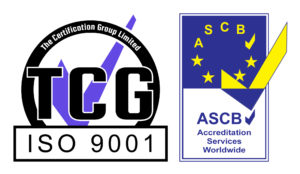Floor Screeding
The Essential Guide to Floor Screeding
Getting it right – which floor screeding should you choose?
Hi, my name is Andy Parkin, Managing Director of the Multi-Award Winning Speed Screed. Today, I am going to take a look at floor screeding, specifically how to choose the type of screed to meet your needs.
At the most basic level, floor screeding is simply applying a combination of sand, cement and water to an existing floor base to provide a strong, stable surface on which to apply a top flooring layer.
Although the process is simple, there is a lot more to it than just placing the mixture and walking away. One of the most critical decisions is what type of product and construction you need. If you get this wrong it can impact on the quality of the floor, the finish and, ultimately, how long it will last. If the process is done badly it can become a very expensive and time-consuming problem to rectify, so let’s look at types of product and how you can get it right the first time.
Choosing the right product
Traditional screed is made by combining and mixing sand and cement with water (ratio 1:4-5) to create a level floor base for the final flooring finish. There are several different brands around, each of which lends itself well to a variety of projects. To make the right decision you will need a good understanding of the types of screed and what they are used for. Let’s go over these here:
Free-flowing screed
This flooring screed is also known as self-levelling and/or self-compacting screed and is popular because it is easy to place and the final result is always consistently reliable. However, in areas that are likely to get wet, these are not a good choice. They can’t be used as a final surface either, so a top layer of flooring would need to be installed.
Floor levelling compounds
This is different from the free-flowing screed in that they are used as a final top layer. This screed helps with levelling the floor and also makes a strong, reliable base for top flooring solutions like tiles or vinyl. These compounds are more expensive than other solutions but are good floor screeding options in areas like factories, warehouses and other high-traffic areas.
Structural Screeds
Structural screed is great where you have a precast surface already in situ. However, for this type of floor screed to be effective you will need to hire a structural engineer to make sure that the specifications of the screed are suitable for the task. Things like load, flexibility, and so on must be considered before settling on your final choice.
Accelerated or Fast Drying screeds
These floor screeding products are useful if your project is time-sensitive and you need to avoid the usual waiting time associated with screed flooring. Depending on the thickness of the screed level this floor screeding solution could reduce your timescale significantly. Some brands can allow the floor to be used from around 3 days following application. When compared to a 110 day drying time for a 75mm screed layer this is not an insignificant gain.
So those are some of the basics to consider when choosing a flooring screed. If you need more information, take a look at some of our other articles about floor screeding for plenty of hints and tips on how to get the best from your screed.
Our Accreditations
About Speed Screed
Speed Screed Limited was founded on the key principle of providing first-class customer service. It has since built itself an impressive reputation for delivering high-quality projects across the United Kingdom Floor Screed.
The company’s success is built on its belief in quality work, attention to detail, on-time completion, strong working partnerships and the recruitment of top-level staff. about us >








